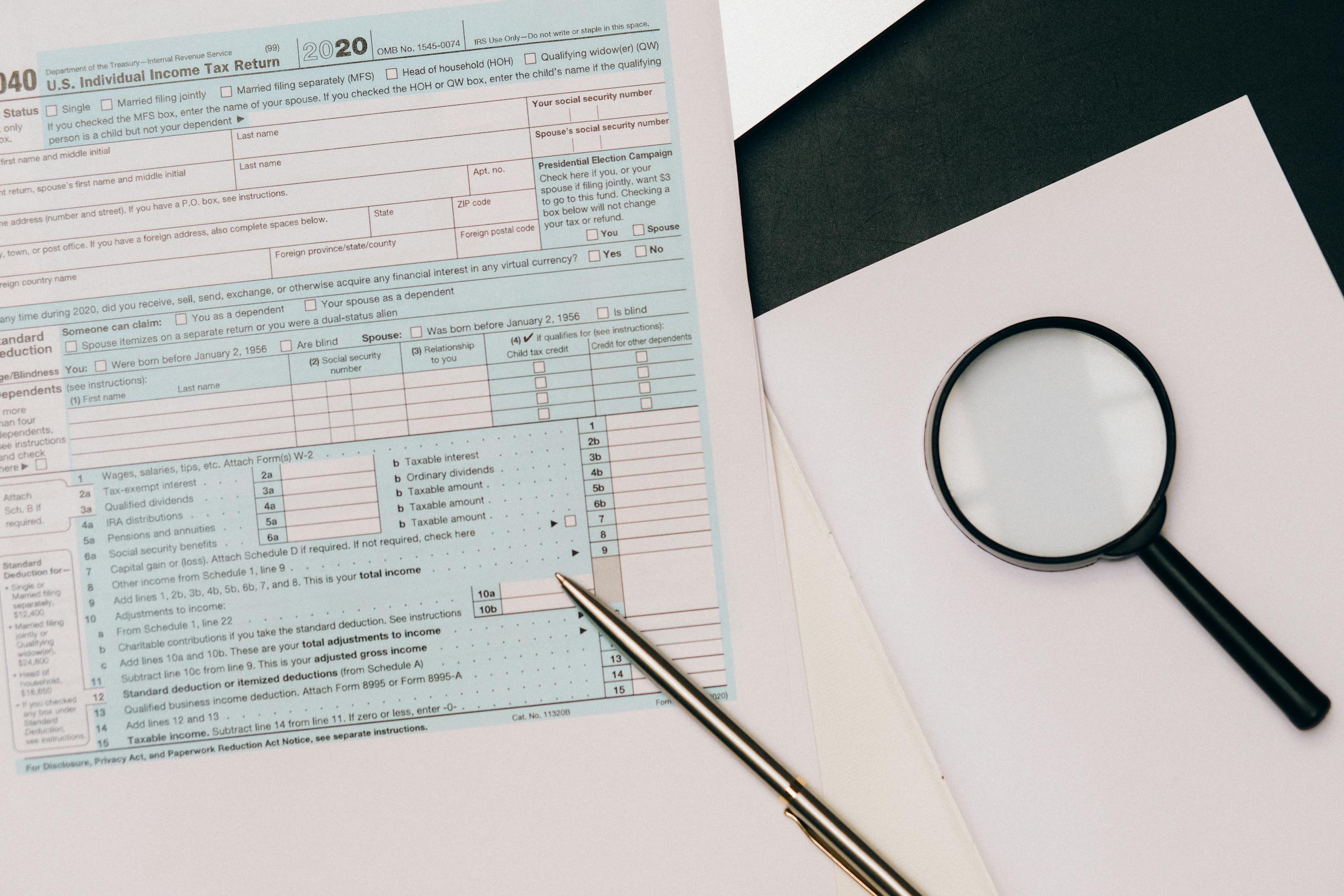How to Set Up a Revocable Living Trust

Have you ever wondered what would happen to your assets, your property, or to your loved ones if something unexpected were to happen to you?
If the thought of navigating the complex world of wills and probate has ever left you feeling overwhelmed, you’re not alone.
What if there was a way to simplify things, secure your family’s future, and ensure your wishes were followed. Well you can have all of that and this can be done by simply setting up a Revocable Living Trust.
And that is what we are going to be discussing in this blog post. We’ll break down how to set one up step-by-step so that you can protect your assets, secure your family’s future, and gain control over your estate – all while keeping it flexible for whatever life throws your way.
Even if you’ve never heard of it before or you have always found it a bit confusing, don’t worry.
I’ll walk you through everything you need to know and show you how to set one up, step-by-step.
However before we dive into the how-to set this up, let’s first understand what a Revocable Living Trust is.
What is a Revocable Living Trust?
At its core a Revocable Living Trust is , it’s a legal document that allows you to manage your assets during your lifetime and it outlines what happens to those assets when you’re gone.
The term revocable means you can change it as life circumstances evolve.
Unlike a will, a Revocable Living Trust helps avoid the long, costly process of probate (the legal process that settles an estate), which means your family can bypass much of the red tape that usually comes with transferring assets.
Why Set Up a Revocable Living Trust?
You might be thinking, “Do I really need one? Why not just write a will?” Great question!
Here’s the thing: while a will can distribute your property, a Revocable Living Trust offers several key benefits that make it a better and smart choice. And these are:
1. You Avoid Probate: As mentioned earlier, one of the most appealing features of a Revocable Living Trust is the ability to bypass probate, saving your loved ones time and money. Probate can take months or even years, not to mention all the associated fees and stress.
2. You have Control and Flexibility: Straight up you’re in charge. You can change the terms of the trust whenever you want, as long as you’re alive and mentally sound. This makes it much more flexible than other estate planning options.
3. Privacy: Unlike a will, which becomes a public record once it’s filed, a Revocable Living Trust keeps your affairs private. This means your beneficiaries will have less to deal with when managing your estate.
4. Incapacity Protection: If you become incapacitated (whether through illness, injury, or old age), a Revocable Living Trust allows someone you trust to step in and manage your affairs without needing to go through a court process.
Step-by-Step Guide: How to Set Up a Revocable Living Trust
Setting up a Revocable Living Trust might sound intimidating, but I promise it’s easier than it seems.
Follow these steps, and you’ll be on your way to securing your legacy and protecting your loved ones:
1. Make a List of Your Assets
This is the foundation of your trust. Start by gathering a comprehensive list of everything you own.
Before you can distribute your assets according to your wishes, you need to clearly know what assets you have and what you want included in the trust.
This step ensures that everything is covered and nothing is overlooked.
What to include:
- Real Estate: Any homes, rental properties, land, or vacation properties you own.
- Bank Accounts: Checking, savings, and even certain types of investment accounts that can be transferred into the trust.
- Retirement Accounts: While retirement accounts like IRAs and 401(k)s typically can’t be transferred into a living trust, you can still designate the trust as the beneficiary.
- Life Insurance Policies: You can name the trust as a beneficiary of your life insurance policy, allowing your beneficiaries to avoid probate when they receive the proceeds.
- Personal Property: Things like jewelry, art, collectibles, and vehicles should be listed and specifically designated in the trust.
- Business Interests: If you own a business or have a stake in a partnership, this can be transferred into the trust as well.
The goal here is to capture every asset you might want to pass along and ensure that it is either listed or mentioned in the trust document.
Why it’s important:
Taking inventory of your assets not only helps in distributing your wealth according to your wishes, but it also makes the process of transferring ownership much smoother.
If you forget to list an asset, it could end up in probate or not be handled according to your desires.
2. Choose Your Trustee
A trustee is the person or entity responsible for managing the trust, making decisions about the distribution of assets, and following your instructions as outlined in the trust document.
This can be you (while you’re still alive and able), a family member, a trusted friend, or even a professional trustee.
The important thing is that you choose someone you trust to act in your best interest.
This is arguably one of the most important decisions in setting up a Revocable Living Trust.
What to consider when choosing a trustee:
1. Trustworthiness: Your trustee will have significant control over your estate, so they need to be someone you can trust deeply. This person will have to make financial decisions, manage assets, and potentially deal with difficult family situations.
2. Knowledge and Experience: The role requires financial knowledge, organization, and possibly legal or tax expertise. If the person you have in mind isn’t well-versed in these areas, it might be worth considering a professional trustee or co-trustee.
3. Personal Involvement: Ask yourself whether you want a family member or friend involved in handling your estate. While family members often bring a personal touch, sometimes a neutral third party, like a financial advisor or lawyer, might be the best option so this is something to think about.
4. Contingency Planning: It’s crucial to choose successor trustees as well, someone to step in if your primary trustee is unable or unwilling to serve.
Why it’s important:
Choosing a trustee is one of the most critical decisions, as this person will be responsible for carrying out your wishes after you’re gone.
The wrong choice could lead to mishandling of your estate or even family disputes.
A trustworthy and capable trustee ensures everything runs smoothly and according to your plans.
3. Decide Who Gets Your Assets
Once your assets are listed and your trustee is chosen, the next step is to determine who will inherit your assets.
This part is all about deciding the beneficiaries—whether they’re family members – children, your spouse, friends, or charitable organizations.
You’ll need to specify in the trust who gets what, and how they’ll receive it.
What to consider when choosing beneficiaries:
1. Family Dynamics: Make sure to consider the relationships within your family.
Who do you want to pass things along to, and how do you want to divide your estate among them? You can divide things equally or leave specific gifts to certain individuals.
2. Special Circumstances: If you have children, a spouse, or someone with special needs, it’s essential to address how they will be cared for in the trust.
You can create special provisions to set aside funds for their care or ensure they receive their inheritance in a way that’s best suited to their needs.
3. Contingencies: What if a beneficiary passes away before you do, or if they are unable to manage the inheritance?
It’s important to have backup plans in place, ensuring the estate is passed to the next in line or to a specified charitable cause.
Why it’s important:
This is your chance to leave a legacy, ensuring that your loved ones or causes you care about receive what you’ve worked for.
By making these decisions in advance, you can avoid disputes and confusion later, ensuring that your intentions are clear.
4. Draft the Trust Document
Here’s where the legal side comes into play. You’ll need to create the actual trust document now that you have all of the above covered.
You can do this with the help of an attorney (which is highly recommended, especially if you have a large estate or complex assets) or you can use an online service that offers legal templates.
This is where you spell out all the details—who gets what, how and when they get it, and who will manage everything.
The document will need to outline:
- Who the trustee is
- Who the beneficiaries are
- How and when assets are to be distributed
- Instructions for managing the trust during your lifetime and after your passing
Key considerations when drafting the document:
- Clarity: It’s crucial that your instructions are clear and specific. Vague instructions can lead to confusion and, potentially, legal battles after your passing.
- Legal Requirements: Trust laws vary by state, so it’s essential to ensure your document meets the requirements in your state of residence. Consulting with an estate planning attorney is often recommended, especially if your estate is large or involves complex assets.
- Trust Terms: The trust document needs to specify terms like who the trustee is, who the beneficiaries are, how the assets will be distributed, and what the instructions for asset management are (especially if you become incapacitated).
- Successor Trustees and Contingencies: It’s also wise to have backup trustees listed, should your primary trustee be unable to fulfill their duties.
Why it’s important:
A well-drafted trust document ensures that your wishes are followed precisely.
If the document is unclear or doesn’t meet state requirements, it can lead to costly delays, legal disputes, or unintended consequences.
5. Transfer Ownership of Your Assets into the Trust
Simply creating the trust isn’t enough; you need to legally transfer your assets into it.
This means changing the ownership of properties, bank accounts, and any other assets into the name of the trust.
If you don’t transfer ownership of your assets into the trust, those assets could still end up in probate, defeating the purpose of setting up the trust in the first place.
How to transfer assets:
- For Real Estate: You’ll need to execute and file a deed transferring ownership of any real property to the trust. This typically involves the services of an attorney to make sure everything is properly recorded. Because this typically requires recording a deed with the county.
- Bank Accounts: For financial accounts, you need to contact your bank and change the account ownership to reflect the name of your trust. Some banks may require you to open a new account in the trust’s name.
- Investment Accounts: Similarly, investment accounts can be transferred to the trust, but you must make sure the correct beneficiaries are designated on each account, per your trust document.
- Personal Property: For tangible property, you may need to make a list of items and specify in the trust document who will inherit each item. If the item is valuable, you may want to have it appraised.
Why it’s important:
The whole point of a Revocable Living Trust is to avoid probate, and this can only happen if the trust is the rightful owner of your assets.
Transferring ownership is essential for the trust to function as intended.
6. Review and Update Your Trust Regularly
Life is always changing and so should your trust —whether it’s a marriage, divorce, the birth of a child, or a significant change in assets.
It means therefore that your trust needs to evolve with your life to ensure it always reflects your current wishes.
When to review your trust:
- Major Life Events: Marriage, divorce, the birth or adoption of a child, or the death of a beneficiary should all trigger a review of your trust.
- Changes in Assets: If you acquire new assets, sell assets, or make significant financial changes, make sure the trust document is updated to reflect these changes.
- Changes in Laws: Estate planning laws change from time to time. It’s wise to review your trust regularly with an attorney to ensure everything remains in line with current regulations.
Why it’s important:
The last thing you want is to have your trust outdated when it’s needed most.
Regular reviews ensure that your wishes are still carried out exactly as you envision, no matter how life evolves.
Cost of Setting Up a Revocable Trust
- DIY Options:
- Online services like Trust & Will or LegalZoom charge $250–$500.
- Suitable for simpler estates without complex needs.
- Using an Attorney:
- Costs range from $1,500 to $5,000, depending on the complexity of your estate and the lawyer’s experience.
- Recommended if you have significant assets, multiple properties, or special considerations.
- Additional Costs:
- Recording fees (if transferring real estate): $50–$200.
- Notarization fees: $10–$25 per document.
Final Thoughts
Setting up a Revocable Living Trust is a powerful way to secure your assets, protect your family, and ensure that your wishes are honored – all while keeping things private and flexible.
From avoiding probate to maintaining control over your assets, it’s a comprehensive tool that can protect your legacy and ensure that your wishes are followed.
It might take a little time and effort to get everything in place, but once you do, you’ll have the peace of mind knowing that your legacy is protected, no matter what life throws your way.
Remember, creating a trust is a personal and important decision, so take your time, gather the right information, and if needed, consult with an estate planning attorney to make sure everything is set up properly.
Your future self – and your family – will thank you.
Thank you for reading! Feel free to leave a comment below if you found this helpful.
Stay tuned for more tips on estate planning and creating a life of legacy.






